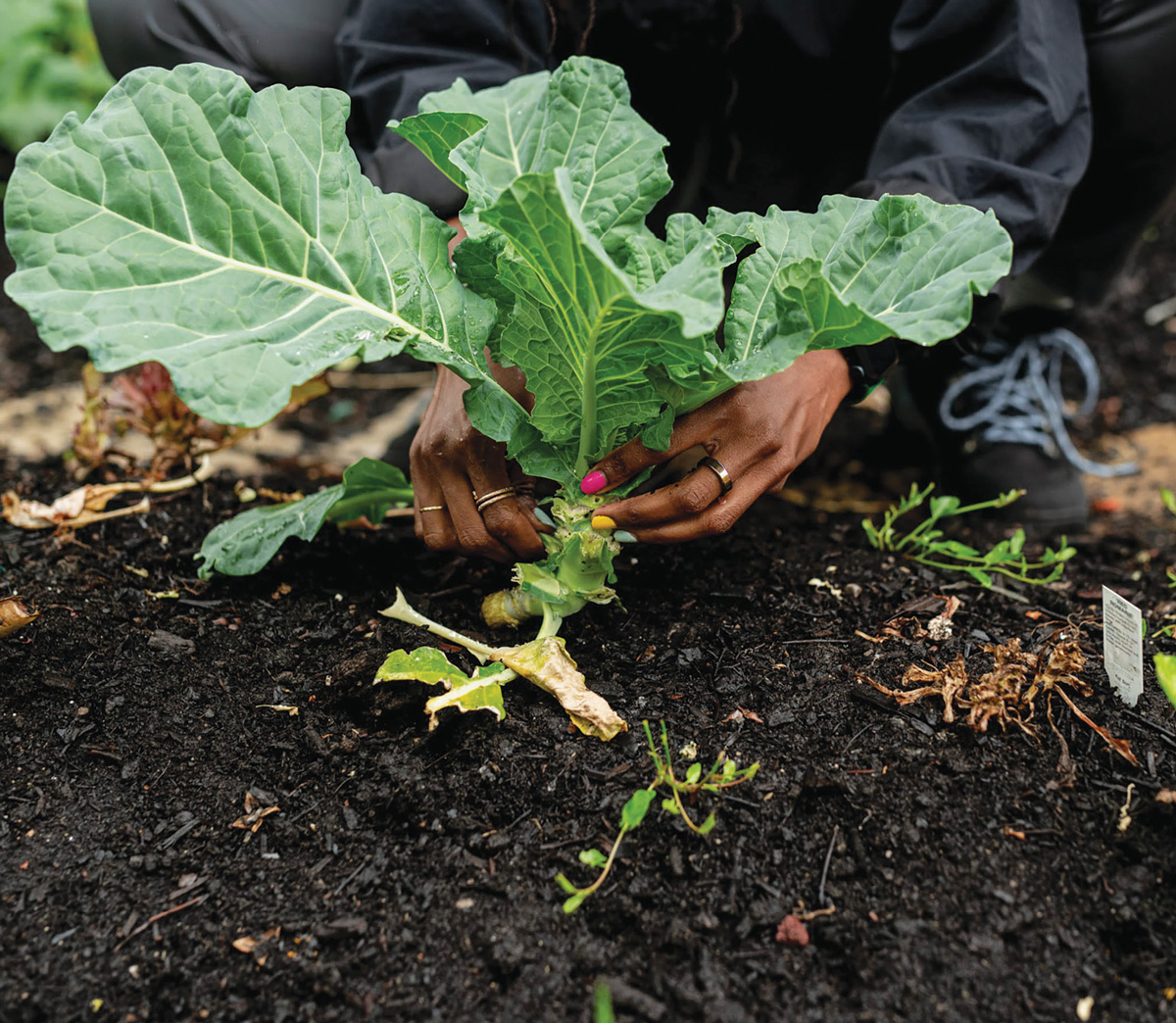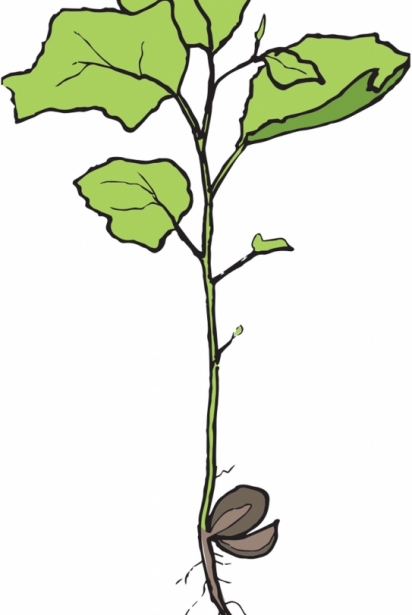Plant Prep
It’s never too early to start plotting out your garden for the year. Make sure to have a plan, nourish your plants with compost and watch them flourish.
LATE WINTER, when the weather is still a little chilly (not to mention those random late-season snowstorms), might not seem like the time to limber up your green thumb but experts say it’s the perfect time to map out your garden and prepare your soil for the growing season to come.
Having a plan is essential, says Dazmonique Carr of Deeply Rooted Produce, a mobile grocery store in Detroit that grows its own organic, all-natural produce and sources from BIPOC-owned and -operated family farms. “Knowing what you’re planting where and the right type of compost you’ll need to help your crops thrive—these will put you well on your way to a successful harvest,” she says.
Prep the soil with black gold
Compost—decomposed organic material such as leaves or vegetable scraps—nourishes soil and provides a healthy habitat for everything you grow. It’s so valuable to gardening that it’s sometimes referred to as black gold. Compost benefits soil health by improving tilth, increasing water retention and creating air pockets for plant roots to grow, according to Michigan State University Extension.
There are two ways to compost and the method depends on how much time and effort you want to put into the process:
Cold composting is easier but slower, and entails merely piling up yard and kitchen scraps. Nature does the rest. The material is usable for the following season.
Hot composting is faster; the compost pile is placed near a water source where it’s convenient to transport for garden use. Microorganisms must be placed in the pile with the materials to complete decomposition: food, water, proper temperature and oxygen. Usable food materials are referred to as “brown” (coarse, dried vegetative material such as twigs, straw or dried grass stalks) or “green” (kitchen waste, grass clippings, weeds and other green vegetative material), according to MSUE. Water levels should be checked regularly; too much water can reduce the level of oxygen. Hot composting will result in usable compost within a couple of months.
Scott Welcer of Welcer Farms in Salem Township says making compost from scratch takes work but is worth the effort. He says most gardeners, especially those with container gardens, are “hybridizing.”
“They’ll start with compost they can buy, like one of the Dairy Doo fertilizers made here in Michigan, then add soil amendments” like bone meal, he says.
What to plant and when
It’s time to turn your attention to your garden’s layout. Map it out, crop by crop. What will share soil with what? “Grow what you like and what you’ll use,” Welcer advises, “especially if you have limited space.”
To ensure a successful harvest, knowing when to plant is key. Start your gardening season by planting cool-season vegetables, MSUE advises. These plants prefer lower temperatures for seed germination and plant growth and can withstand frost and freezing temperatures. Cool-season vegetables include onions, peas and spinach and can be planted as soon as the ground can be worked in the spring.
Early spring is too early for crops such as cucumbers, melons, squash, peppers and tomatoes, which can be killed by frost and are sensitive to low temperatures. They can’t be planted outdoors until there is no more risk of frost or unless they are placed under protection such as hot caps, tents or covers. If planted too early in cool soil, seeds of warm season crops are at risk of rotting.
Pairing plants
Corn, beans and squash have long been known as the Three Sisters to indigenous people, who would plant these crops together. Iroquois women mixed their crops, using a system called “interplanting,” according to the Carnegie Museum of Natural History. They would plant corn and then, two or three weeks later, return to mound soil around the young plants and plant bean seeds in those hills. The beans contributed nitrogen to the soil, and the cornstalks supported the beans. Between the rows, the women planted squash, whose leaves provided shade and helped to preserve moisture and deter weeds.
This concept can be applied to your garden. MSUE suggests interplanting fast-growing crops that will be harvested early (such as lettuce, radishes and spinach) with larger, later-maturing plants (such as tomatoes and peppers). When the first crop is harvested, the slower-growing plants will have room to mature.
Roots are another factor to consider when selecting companion plants. When deep-rooting plants are placed near more shallow plants, the roots will grow in different soil strata, absorbing moisture and nutrients from the different depths of the soil. Some examples include carrots with peas, strawberries with bush beans, asparagus with tomatoes and parsley, beets with onions, and leeks with vine crops.
At the same time, there are plants that do not grow well together such as beans with onions or garlic, cabbage with tomatoes and potatoes with tomatoes.
Carr says in addition to having a plan for your garden, it’s also important to have a sense of determination.
“Not everyone has a green thumb,” Carr says. “Or at least not right way. Half the battle is not getting discouraged. Just think of how great it’s going to be to see your garden in full flower.”






